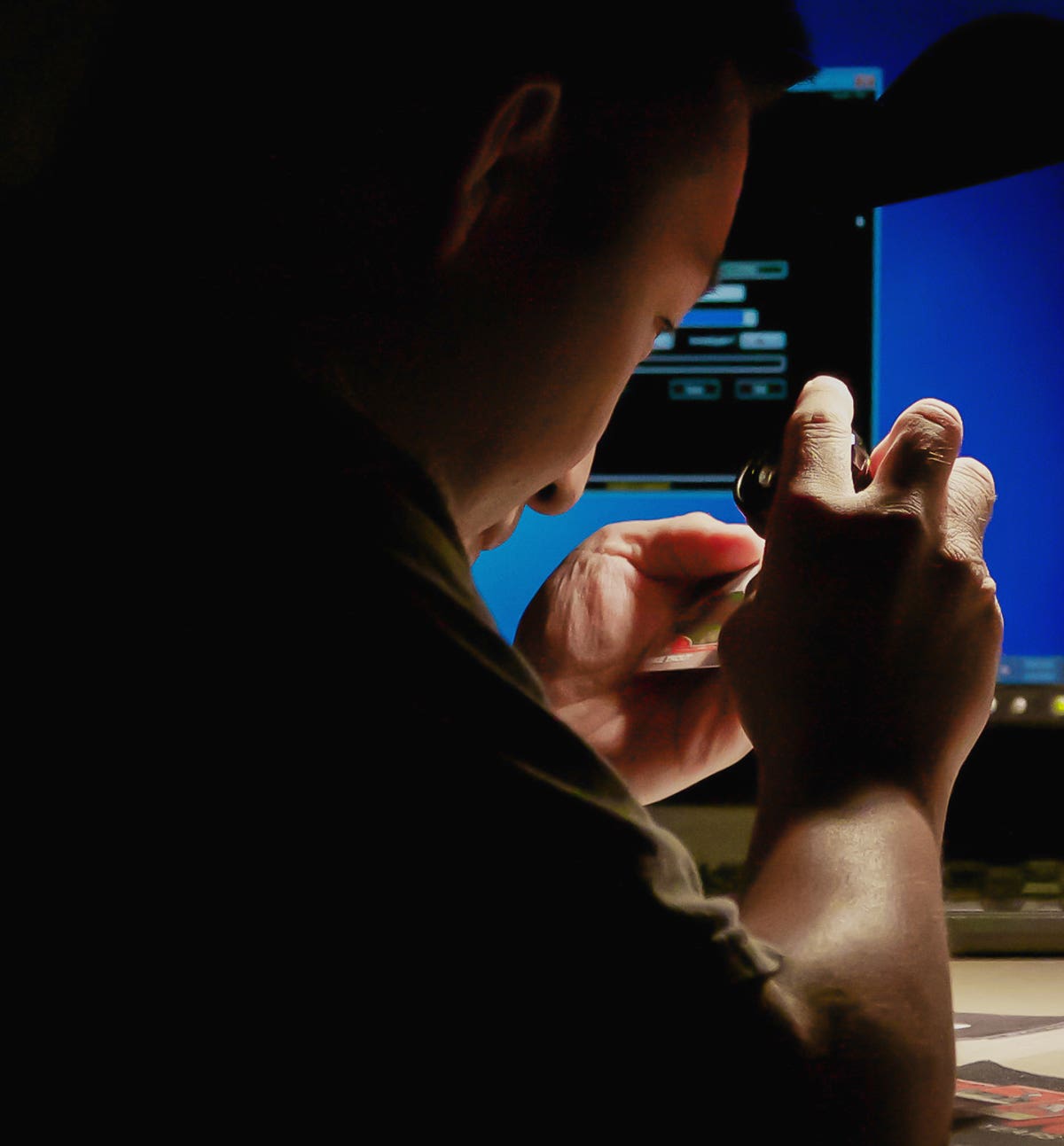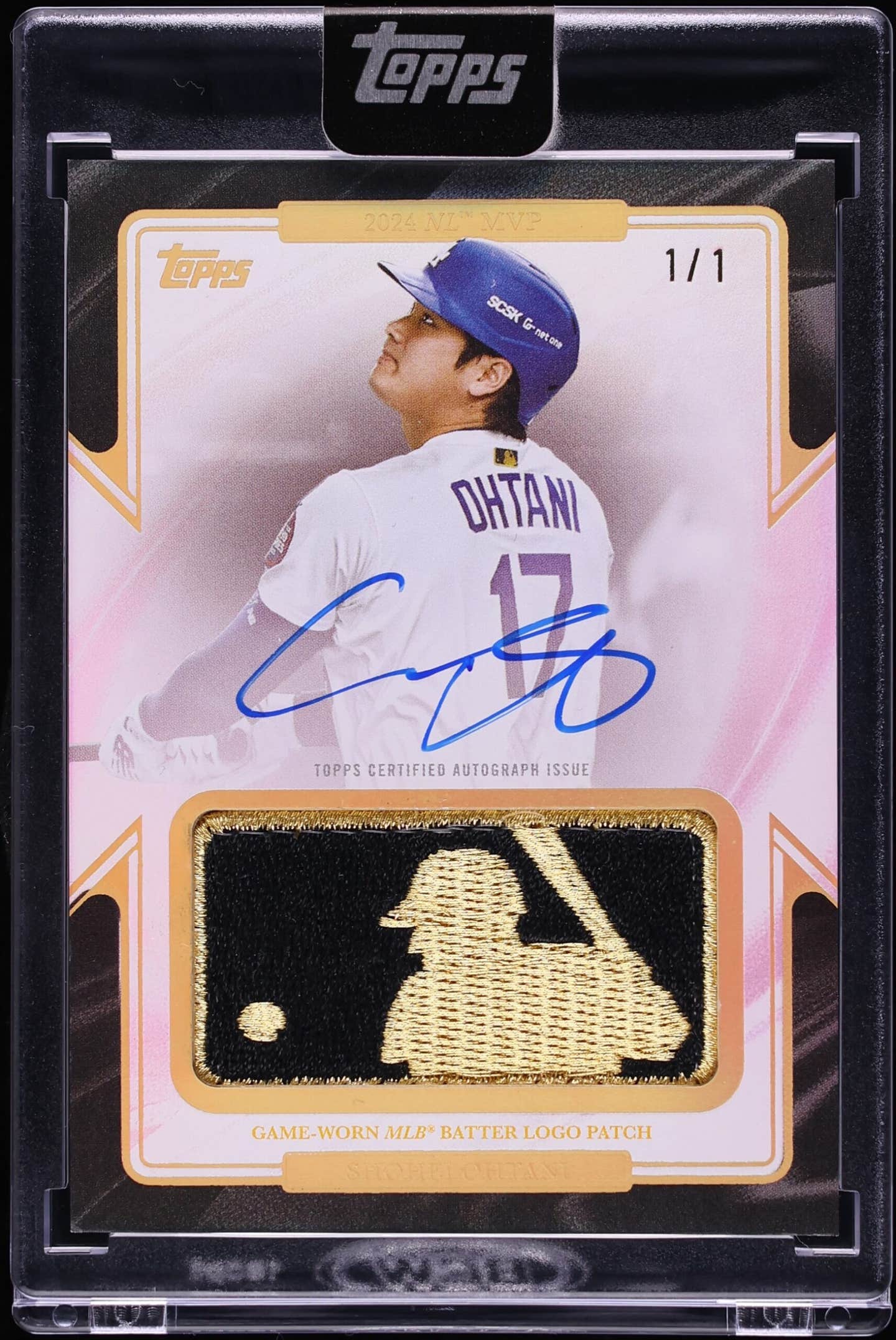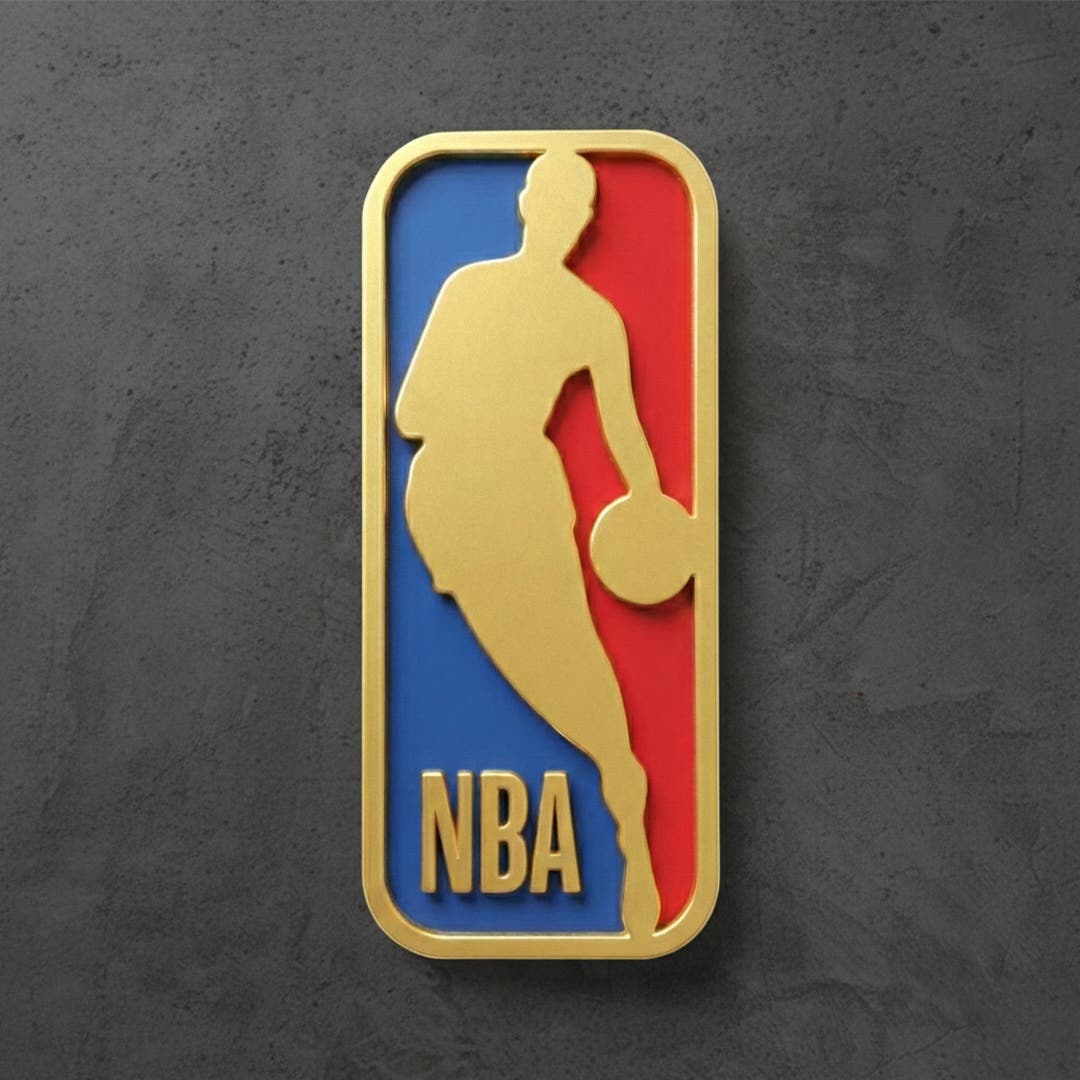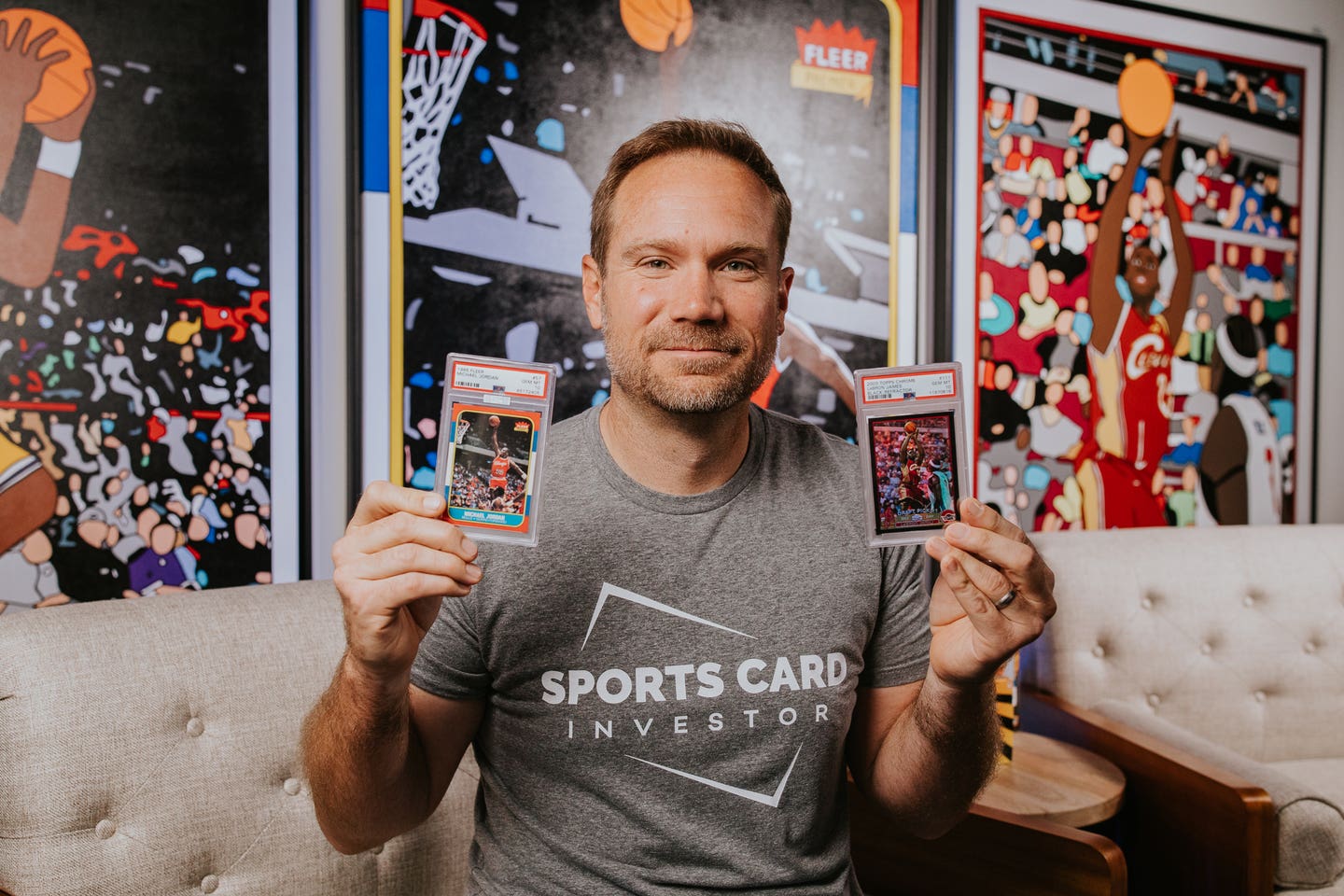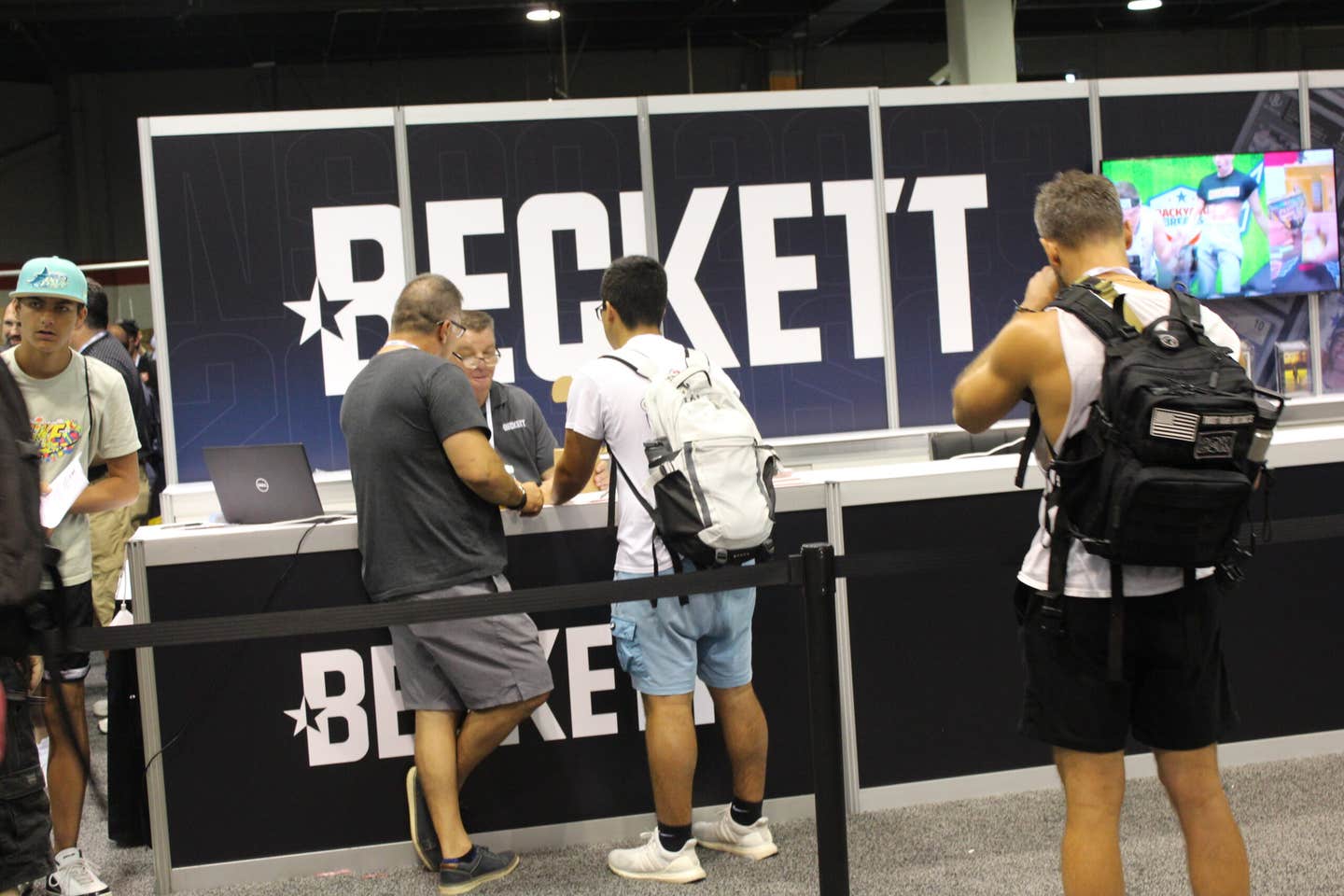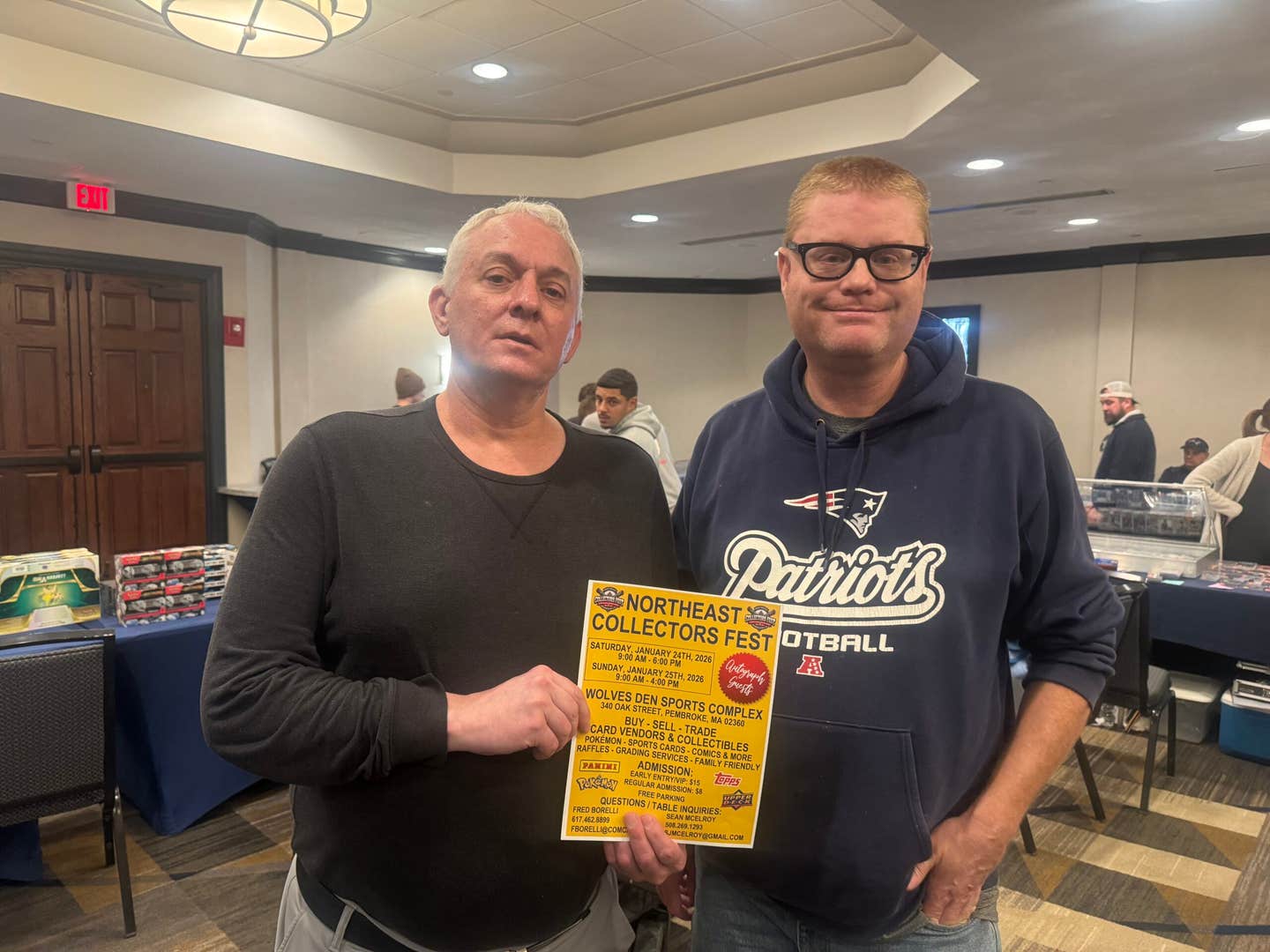News
AU Sports moves into new larger facilty
By George Vrechek
AU Sports Memorabilia store, north of Chicago, has been a huge oasis for vintage sports card collectors for nearly 30 years. I was concerned when I read the note on their website that said they would be moving. The store had moved once before into the large 3,600-square-foot store occupied for the past 20 years in Skokie, Ill. Given the current economic climate and the impact of the Internet on retail card businesses, it would not be surprising if the next move had been a retrenchment.
On the contrary, I found that AU Sports would be moving into a better retail space in a good-sized, modern shopping center with more parking and more foot traffic. By moving some of the 10,000-piece publication inventory into a separate warehouse, owner Steve Gold was able to cut the size of the new store to 2,300 square feet. There are dealers with warehouses that are larger, but there can’t be too many retail stores that have 2,300 square feet devoted primarily to vintage cards. The store houses 4 million sorted cards, plus enough cards in unsorted lots and unopened boxes to push the total to more than 10 million cards.
Audre and Eddie Gold
Steve Gold’s mom, Audre, was not your typical baseball card collector’s mom. Audre Gold not only hung onto Steve’s and his brother Bruce’s cards, she bought a few million more herself. Steve described their start in the business as follows: “I was 13, and my dad was a sportswriter for the Sun-Times. I wrote an article about an ex-boxer running a card show. My dad placed the article on the back page of the Sun-Times. In appreciation, the boxer gave my dad a free table. My dad was going out of town to cover the Blackhawks and couldn’t be there. My brother and I had a shoebox full of baseball cards, so my mom drove us to the show. With our one shoebox and some old sports magazines, we made $300. This was the early 1970s, when candy bars were still a nickel.” From this modest start, the cards seemed to keep rolling into the Gold household.
Store opens in 1980
By 1980, Audre Gold and her husband Eddie moved the cards out of their home and opened AU Sports Memorabilia store just north of Chicago. The chemical element for gold is the symbol AU from the Latin word aurum. Collectors apparently remembered enough of their high school chemistry to figure out that cardboard gold was available through the Golds of AU Sports. The Golds’ large retail store survived and thrived as other stores came and went. The Chicago area, like many other cities, had dozens of stores at one time; they have dwindled over the years. The Sports Collectors Store, run by Pat Quinn, the late Don Steinbach and Roger Marth, was one of the first and most established stores for vintage material. It finally closed several years ago. Somehow, AU Sports kept going with seemingly little change in their offerings. The Golds’ 30-year-old son, Steve, joined the business full time in 1988. Steve and brother Bruce had helped at the store since it opened.
Eddie Gold, sportswriter
Steve’s dad, Eddie, was with the Chicago Sun-Times from 1951 to 2002. He wrote their sports trivia column for 45 years and authored or co-authored seven books on Chicago Cubs history. If you stopped into the store when Eddie was there, it was impossible not to get into a discussion involving baseball trivia. According to Steve, his dad really didn’t know much about the cardboard. It was mostly his mom’s responsibility. Audre Gold and her husband Eddie both died in 2002 and Steve Gold continued running the business. Eddie had helped bring in local sports figures into the store, a practice which Steve has continued. For example, AU Sports recently had current backup Cubs catcher Koyie Hill at the store to sign autographs after a Cubs game.
Moving Day
I caught Gold and his crew of Xavier Rivera, Tom Robak, and the rest of the gang right in the middle of moving out of the old store in Skokie and into the new store in Niles, Ill. The old Skokie store was a wonderful mess, cards all over the place and everything was old. There were no cases of graded cards, boxes of new product, jerseys, bats, or T-shirts; just boxes and boxes of baseball, football, hockey, basketball, boxing, golf, auto racing, and non-sports cards. You could find (or at least eventually find) Topps, Donruss, Bowman, Fleer, Upper Deck, regular issues and inserts, Hostess, Posts, O-Pee-Chee, exhibits, and even O’Connell & Son Ink cards. There were also plenty of Sports Illustrated magazines, Baseball Digests, RC Cola cans, posters, Wheaties boxes, Whiffle ball boxes – a beautiful collage of stuff for the vintage sports collector.
The new Niles store was the opposite, at least on Day One: a place for everything and everything in its place. The entire south wall of the store was solid 2,500-count boxes of baseball and football cards stacked 8 feet high, about 4 million cards all in order. Parking at the old store was an adventure. The frontage on Dempster Street was very busy with cars speeding past and no parking in front. You had to know that there was an alley and some parking behind the store. If you made it to the Dempster Street store, it was no accident. You wouldn’t just wander in. The new store is in a large shopping mall with plenty of free parking right in front of the store.
A self-directed search
What makes the excursion to AU Sports enjoyable, in my opinion, is the ability to look at maybe 50 cards of the same player in a set. If you are looking for a certain condition, centering, variation, printing difference, multiples of the same player, or are trying to complete sets, this is the place to come.
In some other stores I’ve visited, you are not allowed the opportunity to go through multiple cards on your own. The proprietor will do the searching and picking. There are very few card stores around that have an inventory of vintage material like this one. AU has more than 10 million cards and few are from post 1990. Just in the last few years, AU began buying the new issues again as they come out and will sell packs and boxes. Gold doesn’t buy much from individuals unless it is pre-1970 material. He enjoys that part of the business, although it is not unusual for a walks-in to boast that they have thousands of old cards – from 1988.
No-fuss cardboard
Gold and his gang don’t fuss over the cardboard that much, which is refreshing in an era when people are getting Topps reprints graded by PSA and offering them on the Internet for $15 a piece. At AU Sports, star cards are protected in plastic sleeves but not graded. The abundant commons from the 1960s and later are just lined up in the long boxes and are not in sleeves. The 2,500-count boxes may have just 50 numbers from the set, with typically 40 to 70 cards of each number. In the early 1970s issues, the 2,500-count boxes have only 20 card numbers, which means there are usually more than 100 duplicates of each card. You sense that the owner feels that the cards are meant to be enjoyed as a hobby, not as investments.
Control costs
Gold keeps the overhead (and direct expenses) low. He doesn’t do much advertising. Since he doesn’t buy much new product, he can control when and what he spends for vintage cards. If he were to start to run low on older cards, he could dig through the many boxes of unsorted cards obtained over the years to replenish the inventory.
Shows and the Internet
The Golds have had a table at every National. They have been at just about every major Chicago show. Since it is a little hard to lug 10 million cards to a show, Gold will bring a sampling of what they have in the store. He will sell magazines, schedules and other memorabilia at the shows and on the Internet. He isn’t into the large, corporate presence at shows. He’s not into graded cards or anything that is shiny. Premiums afforded rookie cards don’t impress him as logical.
Gold has kept his hand in the Internet age by listing much of his inventory on Beckett Marketplace. If you are looking, for example, for a 1971 Topps Jimmie Price, AU Sports has 78 of them to choose from at $1 each. He also lists publications like Baseball Digest and Sports Illustrated on eBay. He doesn’t need a lot of help to deal with auctions or Internet activity, although admittedly the Internet activity has been growing.
Card philosophy
Gold started collecting in the late 1960s. He sold his personal collection of 1948 to 1980 cards a few years ago in what he viewed as a very practical move. His practical philosophy has been to not look back and regret selling cards too cheaply or taking a pass on buying cards that were too expensive. He feels that resales elevate the prices.
For example, he mentioned the Wagner card had escalated from a few thousand to over a million dollars. If that card had stayed in one collection for a long time, Gold felt that the price would not be so high. It is only after the card has been resold a few times that the price escalated significantly. If prices of cards he has sold escalate later on, that is great for the collector. The dealer, too, benefits as other prices increase. Gold will still have more than a few cards left if he suddenly sold a million or so of them. He has a positive attitude, telling me: “You do not know what treasures will come in tomorrow.”
Mom and pop
AU Sports has survived nicely doing the same old thing, giving collectors what they want. The store is run by knowledgeable collectors who know the old cards and remember the early days of the hobby. Like any store with many items and modest staff, if things get busy, it is hard to give every person coming in the door the “royal treatment.” No one will hover over you as you make your way through the store. You never got “hustled” by anyone at AU Sports. Just look around and let them know what you need ... or not. AU Sports is the mom and pop store that has endured where others have not.
George Vrechek is a freelance contributor to SCD and can be reached at vrechek@ameritech.net. AU Sports Memorabilia is located at 5629 W. Touhy Ave, Niles, IL 60714; phone (847) 647-8311; Internet www.ausports@aol.com.



